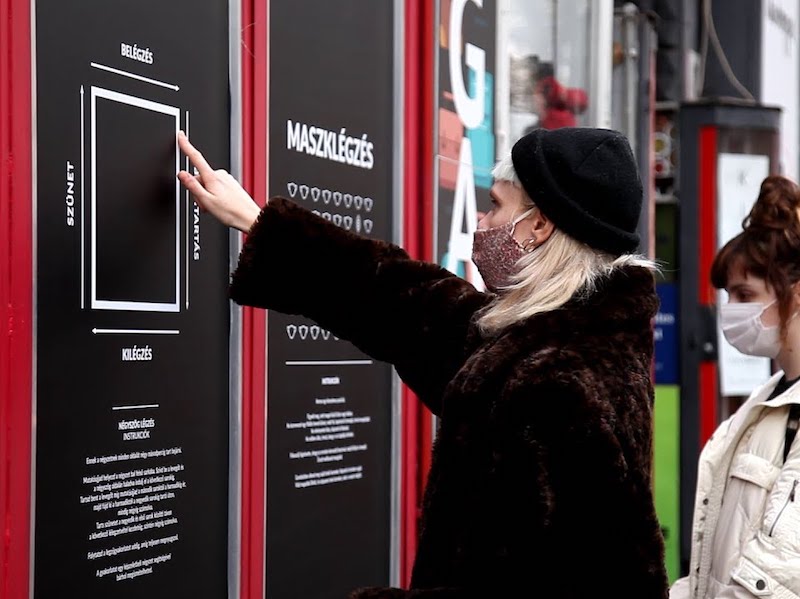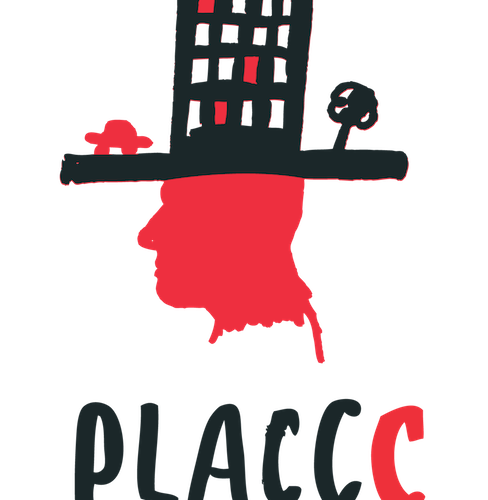 citizens
citizens
Through Body, Mind and Soul – Reconnecting with the City
by Marietta Mogyorósy
16/10/2024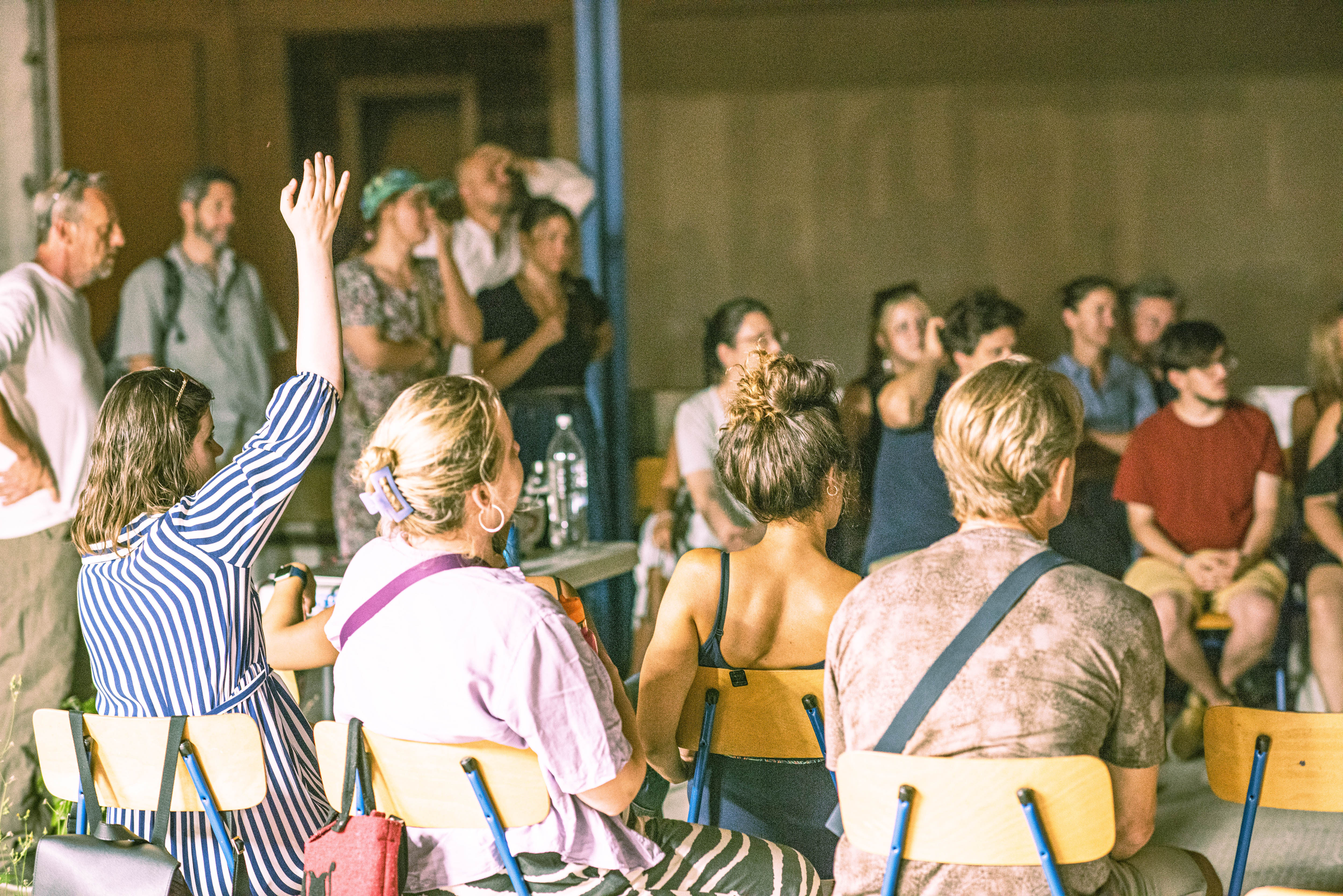
Marietta Mogyorósy is a landscape and horticultural engineer, nature facilitator, environmental educator and a regular moderator of discussions within the Sensing the City project at PLACCC Festival.
Tasting the Danube, cruising with microbes in the city, attending a futuristic water management course, breathing with the pulsation of the Nyugati Square underpass, or contemplating our public spaces through the contours of a planned “space robbery and misappropriation” – this year’s Sensing the City program series as part of PLACCC 2024 Festival brought us a powerful immersion of new and unusual ways to connect to the city.
An increasing proportion of the world’s population is urban, and this trend is expected to continue. Diversity is declining, nature is shrinking to tiny islands or learning to live with the new and changed conditions with varying degrees of success – just like us.
Our ways of perceiving and connecting have also changed. Some of our perceptive abilities have been strengthened, others have been discreetly pushed into the background by the daily hustle and bustle – we don’t even notice that we notice them – and some have been obscured or have almost ceased to function. The loss of diversity is therefore not only visible in the decreasing number of species, or in the appearance of our environment, but also in our own perceptive capability. This has an effect on the ways and quality of connections, both with our environment, with ourselves and our fellow human beings. The city has, not so slowly, developed its own evolution.
Climate crisis, biodiversity loss, disruption of circadian rhythms, plant blindness, alienation, burnout, apathy, civilization diseases, mental illness – just to name some of the anxiety-inducing terms that are bombarded at us daily from almost every channel. What do these have to do with cities? Are they worth dealing with, and if yes, how, and what can a city dweller do? Can we shape our neighbourhood and thus our future? How can we exist in a different way?
Sensing the City is an event series curated by IN SITU Associate Artist Eva Bubla at PLACCC Festival (artistic director Fanni Nánay) hosting small-scale public interventions. This year’s event, which took place from 3-8 September, sought to answer the above mentioned and related questions, encouraged contemplation, rediscovery, co-thinking and perceptual change through a powerful combination: it initiated a dialogue between art, science and community creativity. Attendants were not only immersed in a series of multisensory experiences that opened up new frontiers, but they were also fed with scientific knowledge. Body, Mind and Soul could connect at the same time.
Five artistic projects reflected on urban-environmental issues using five different approaches and site-specific work at their core, inviting the city’s inhabitants to actively participate. The art installations and performances were followed by thematic discussions, putting the experiences into a specific framework.
The week was opened by Csilla Hódi – lutzz&bog – Planty Warhol’s project “Micro-cruising”, which functioned as an excitingly compiled urban nature walk. As participants, we were able to explore three sites of Budapest (Népliget, Sas-hegy, Bosnyák Square Market) through the mysterious and all-encompassing world of microbes in a one-hour “cruising” with the help of an audio guide. The audio material introduced us to the hidden universe of these tiny creatures and organisms, and invited us to actively connect to them, expanding our inner map of Budapest, not only physically but also perceptually. While new layers opened up to us, we ourselves had the possibility to increase the microbiome diversity through our SensiWear (a special biodegradable material) that was applied to our clothes. By touching it to different surfaces we could support the mixing of microbiomes. After the walk at Sas-hegy, participants had the opportunity to deepen their knowledge with a roundtable discussion with the participation of the artists and Dr. István Parádi, plant biologist, assistant professor at the Department of Plant Biology and Molecular Plant Biology, ELTE TTK, moderated by Marietta Mogyorósy, landscape architect, nature connection facilitator, environmental educator (author of this article). Besides the scientific foundations and relevances of the project we also talked about the artistic possibilities of reducing microbiome blindness, with the active participation of the audience.
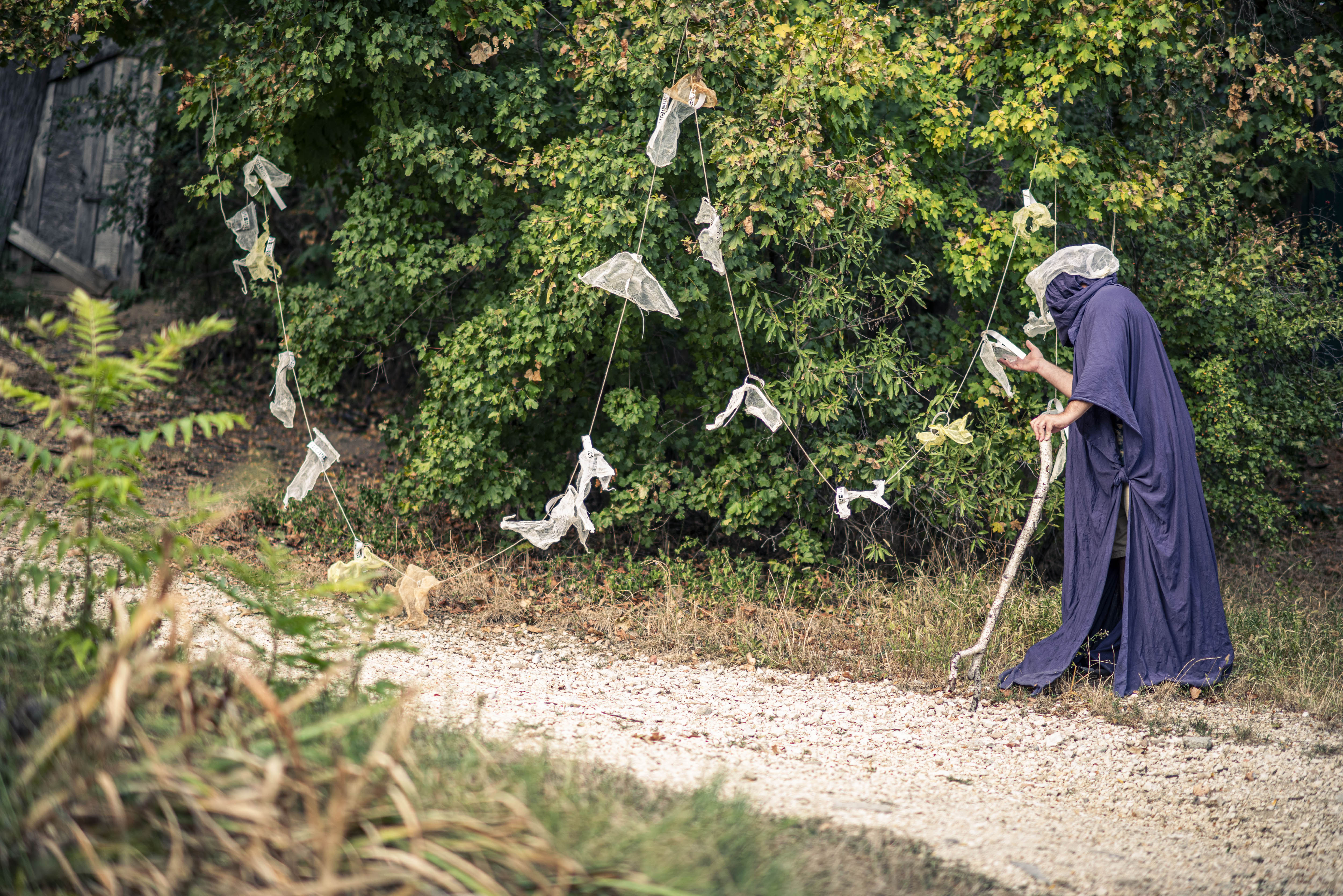 | |
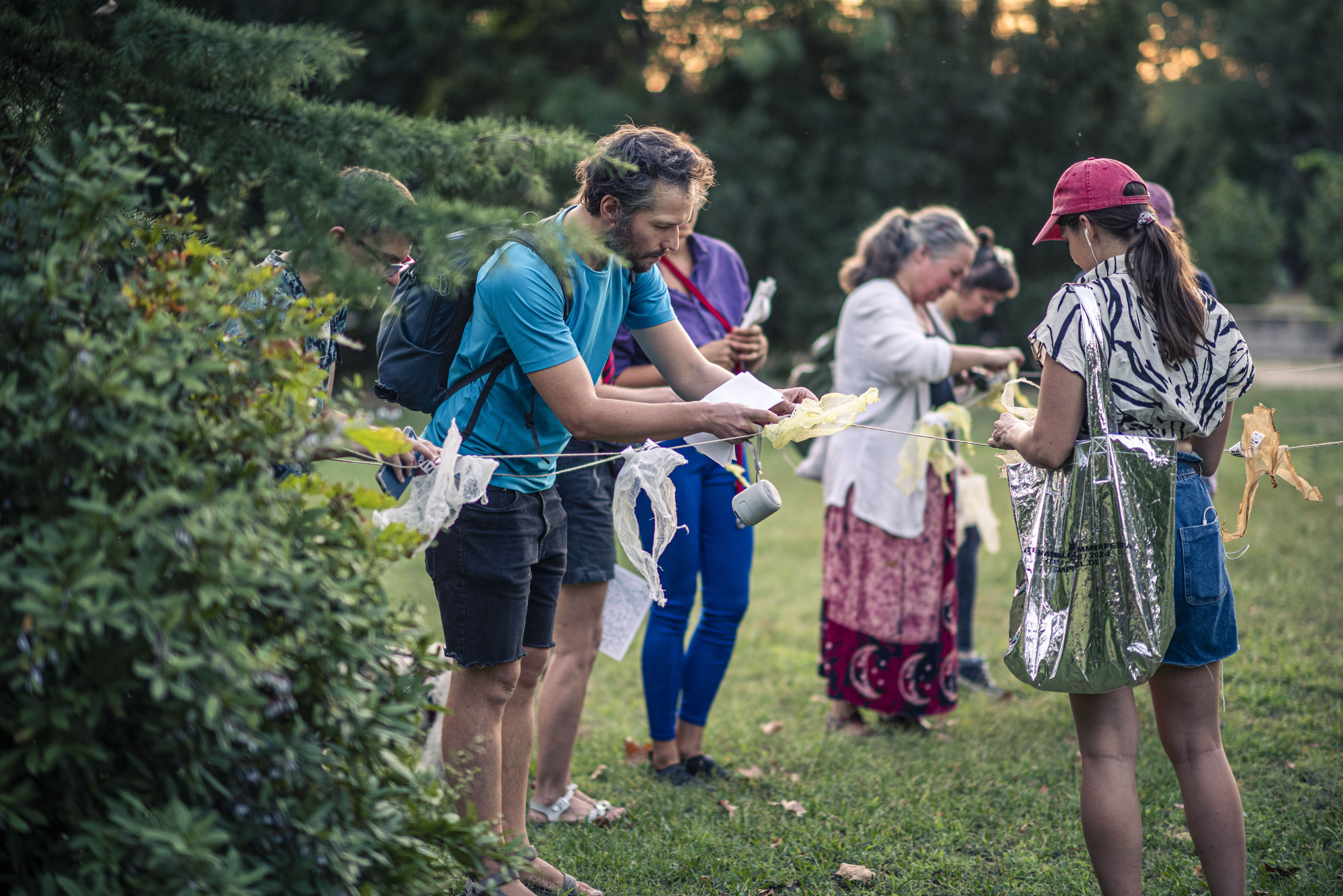 | 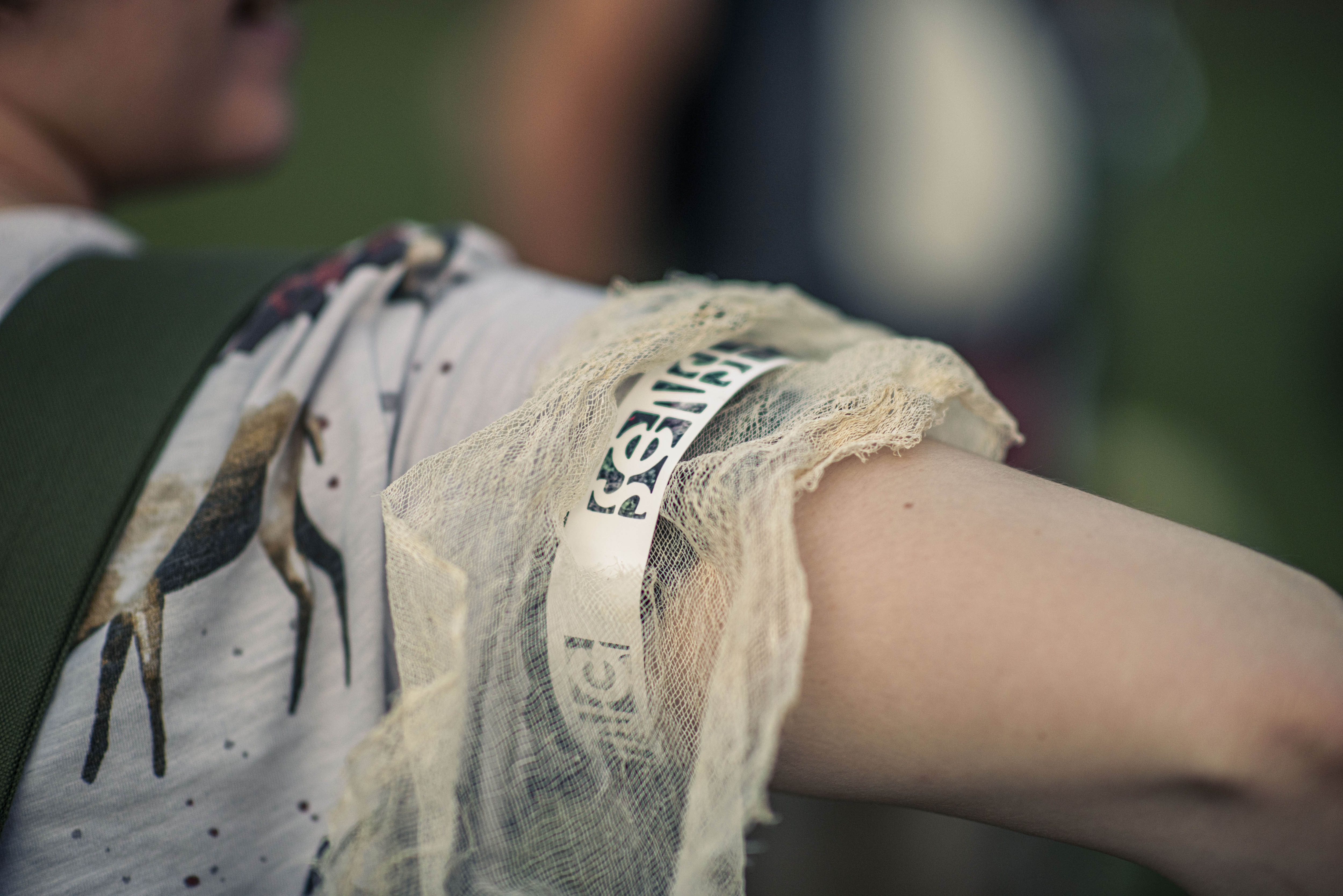 |
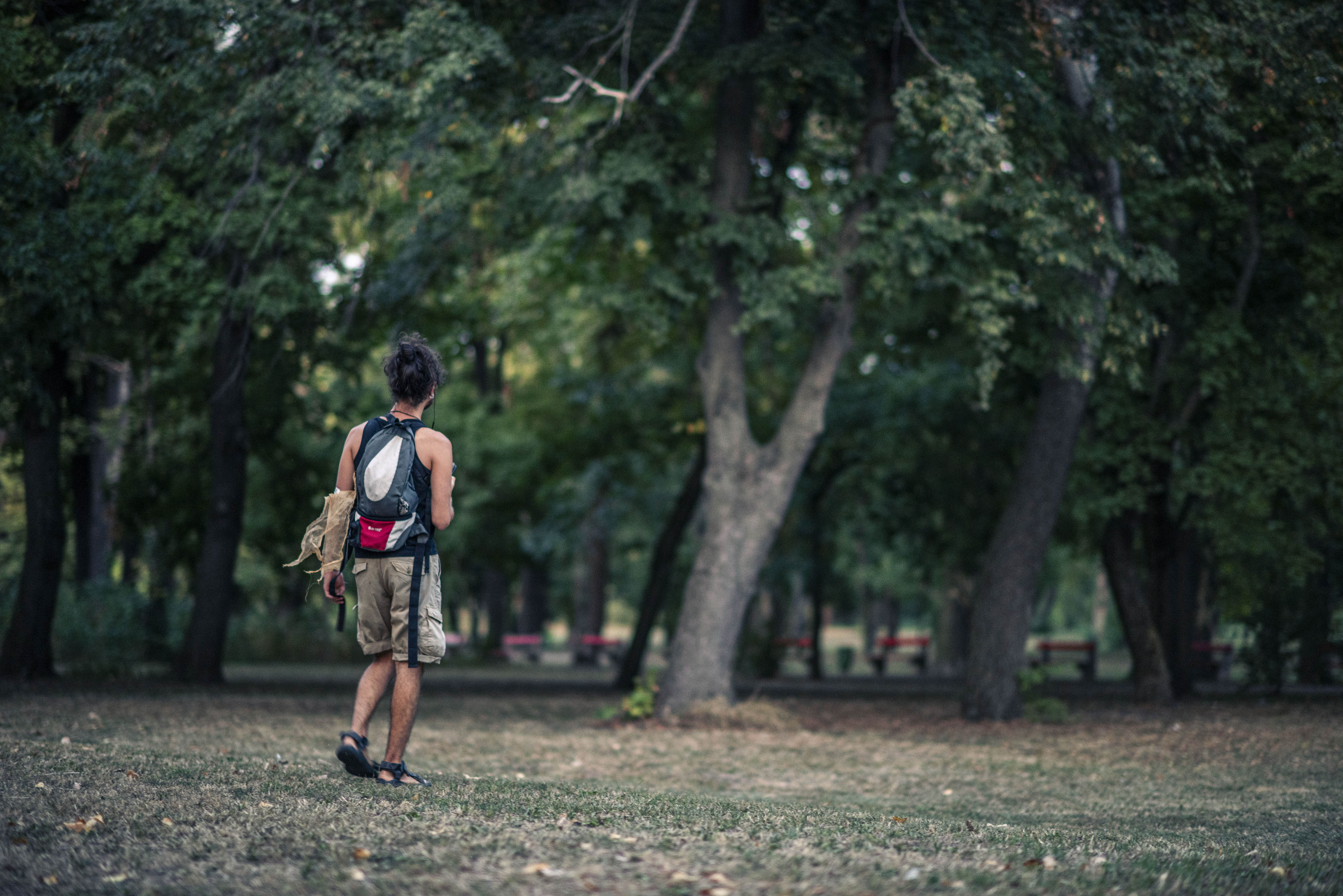 | 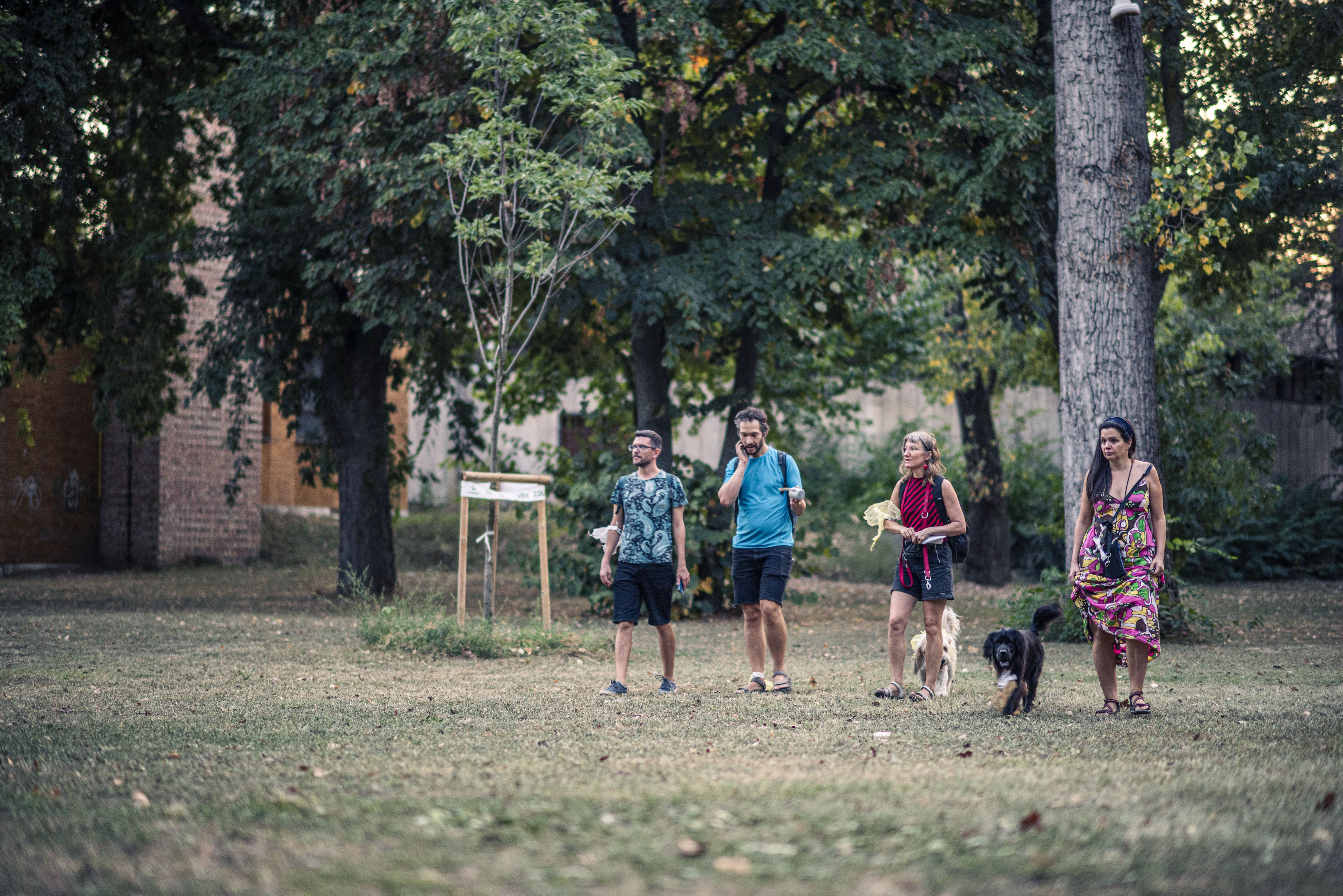 |
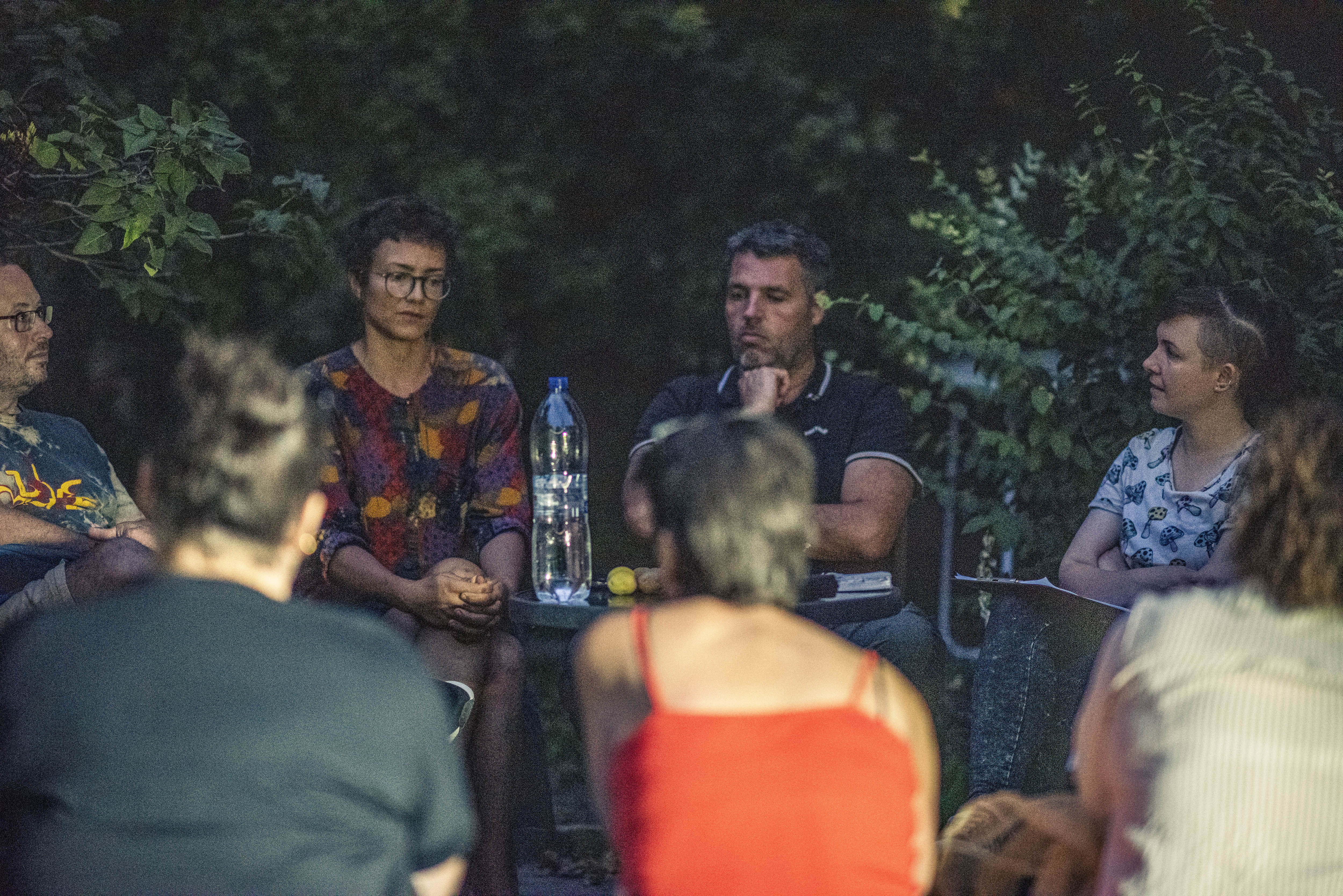 Csilla Hódi – lutzz&bog – Planty Warhol: Micro-cruising. 2024, Sensing the City / PLACCC Festival. Photo: Attila Balogh | |
We were introduced to a very unique artistic genre and speculative world through the participatory theatre play “Water Level” by Anita Patonay and Viktor Bori. The play was based on Tamás Rojik’s youth novel "Drought", taking place in 2040 Budapest, a city facing severe water shortage due to the climate crisis, with various water regulations and a mandatory water management course to citizens. The terrace of the slightly crumbling concrete building, which also houses the Kelenföld Library, was a very wise choice for the location, adding to the somewhat apocalyptic effect. In this genre, the audience (citizens at the course) are not simply passive spectators, but they are also participants in the play due to the arrangement of the seats from the very beginning. Within a stable framework, they have the opportunity to influence the development of the plot, to take active decisions and to play mini roles, reacting instinctively to the situations, based on their own discretion and motivation. Nothing is mandatory here, but you will be a part of it anyways. The second half of the play took the form of debate-theatre, where participants could answer future- and climate-related questions - that were absolutely not easy to answer - by sitting on one side of the place, and then they could justify their choice if they had the motivation to do so. Listening to others’ comments everyone had the chance to change their mind and thus physically change sides. Although being speculative, the entire situation was a very thought-provoking experience with the capability to arouse intense emotions, and was also concluded by a professional discussion. Bence Fülöp, a hydraulic engineer and water management specialist, joined the evening as a panellist to take into account the current scenarios of the climate crisis and outlined the possibilities for action at the social and individual level – in dialogue with the two creators and actors of the play, with whom the connection between educational theatre and sensitisation were also discussed.
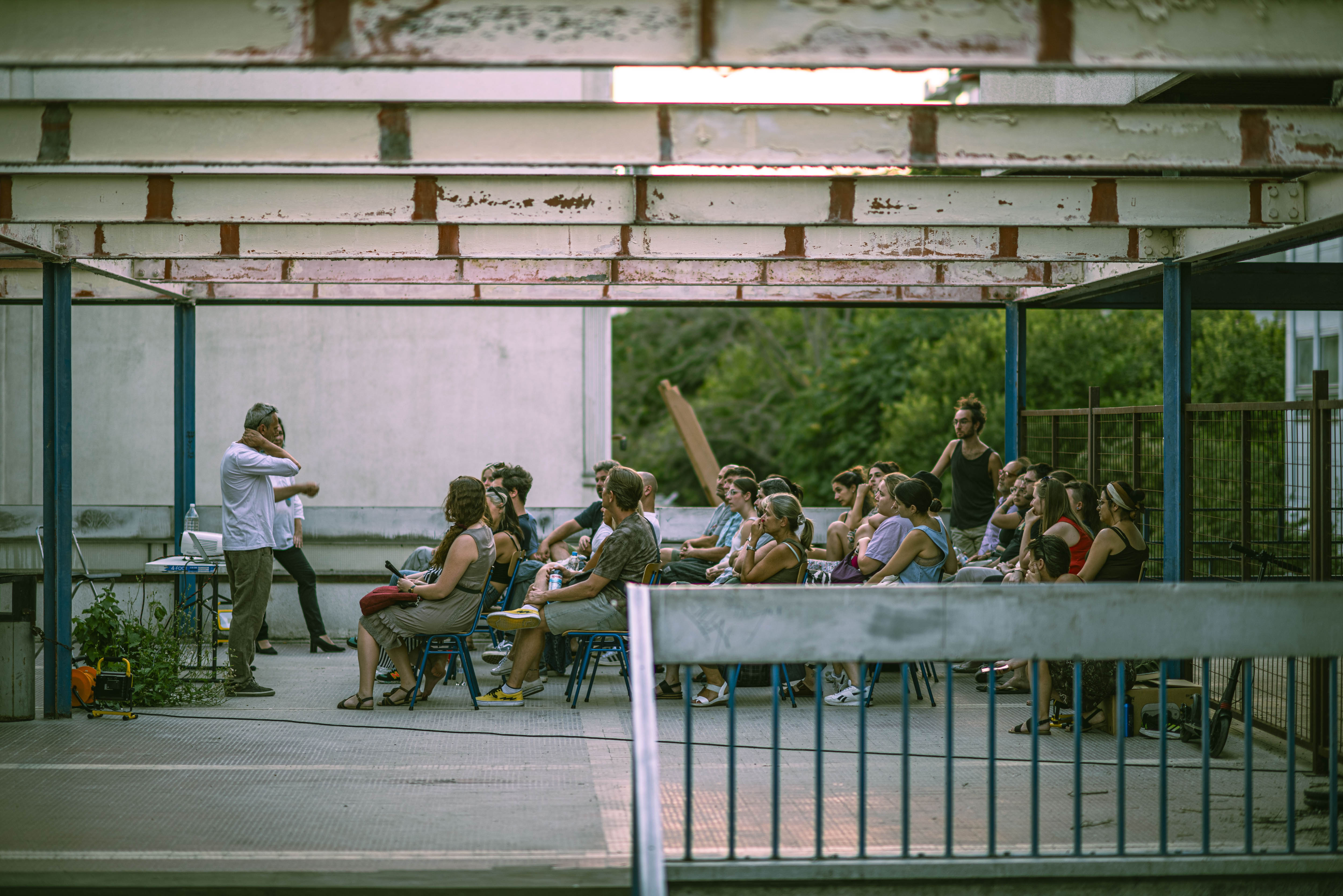 | |
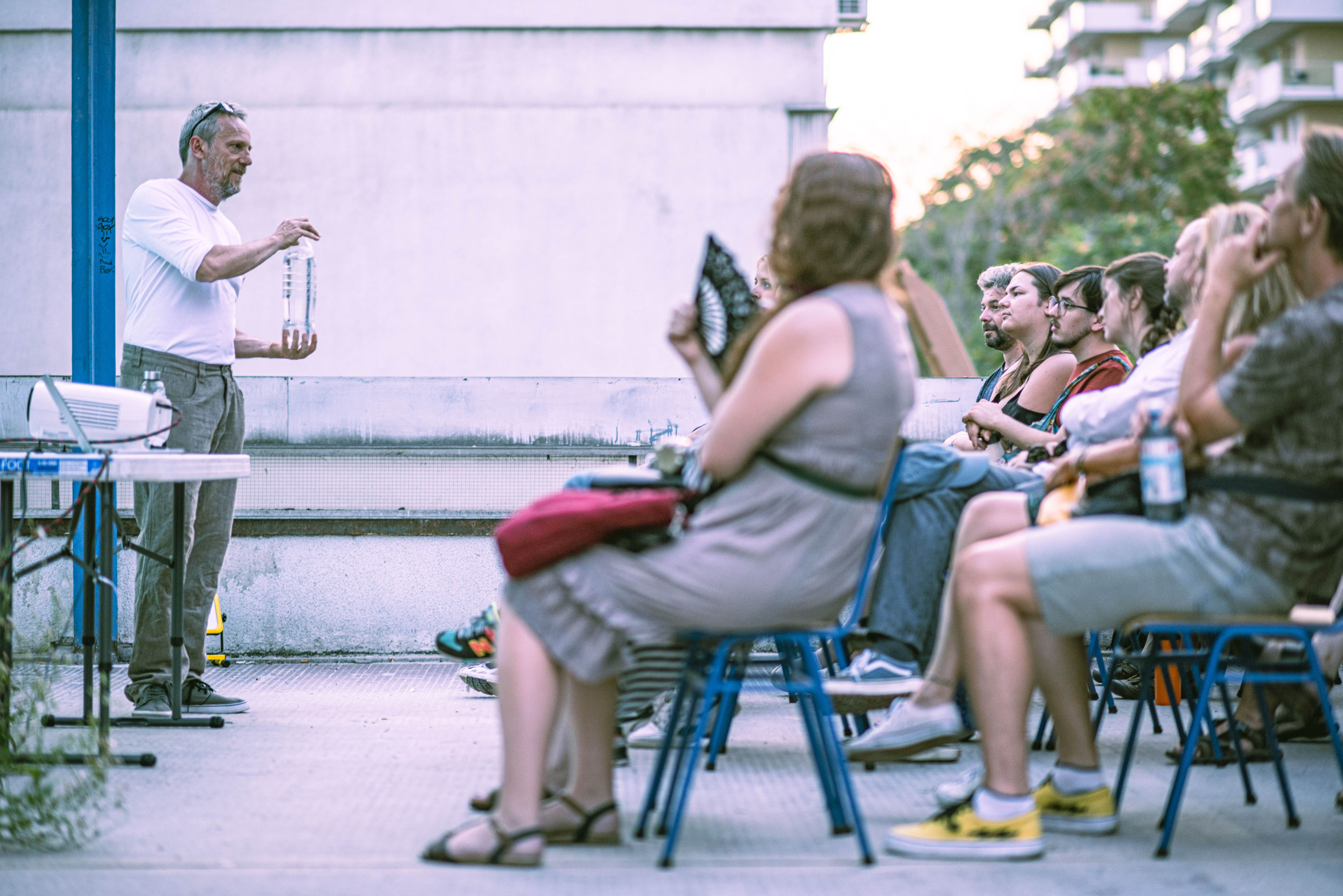 | 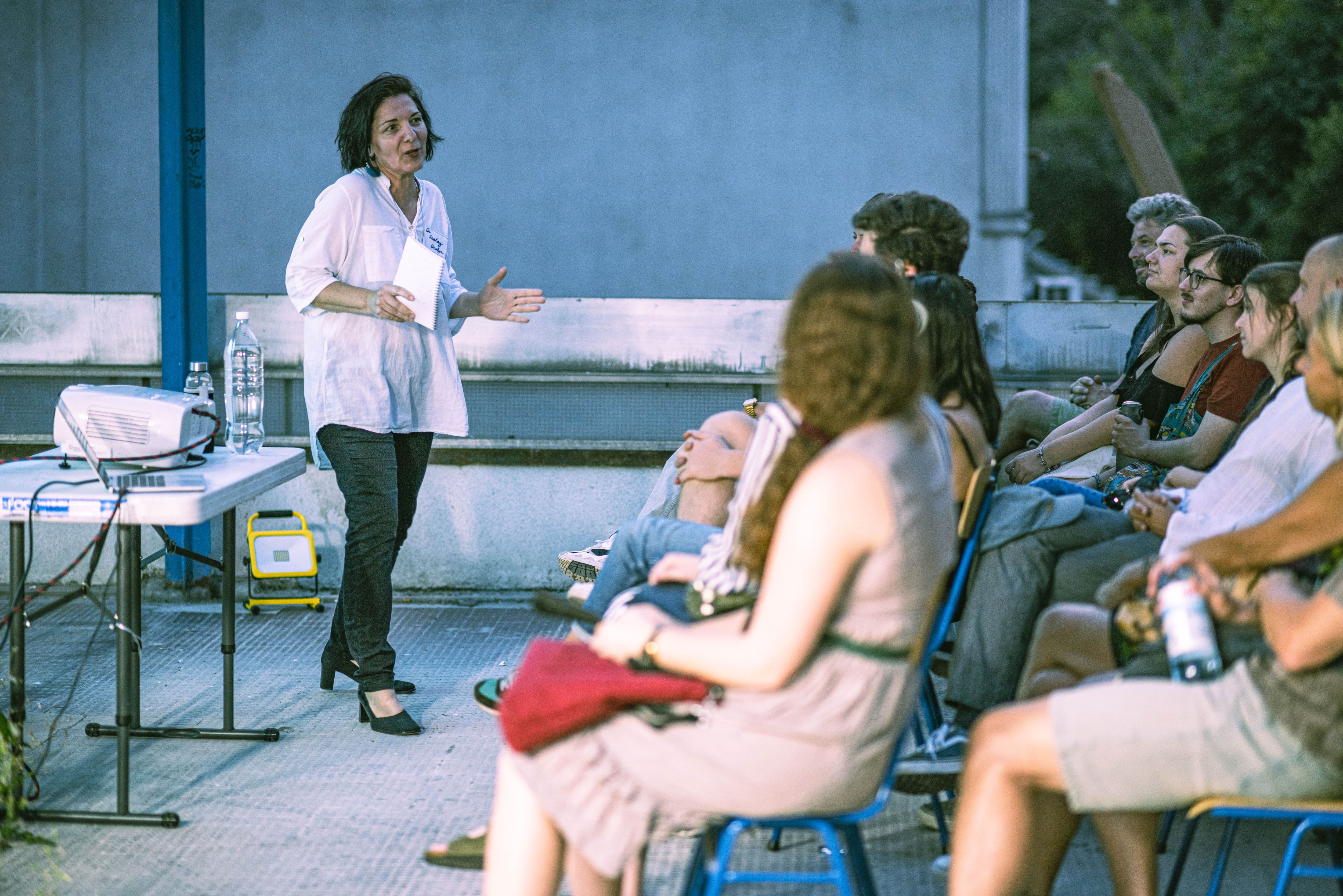 |
 | 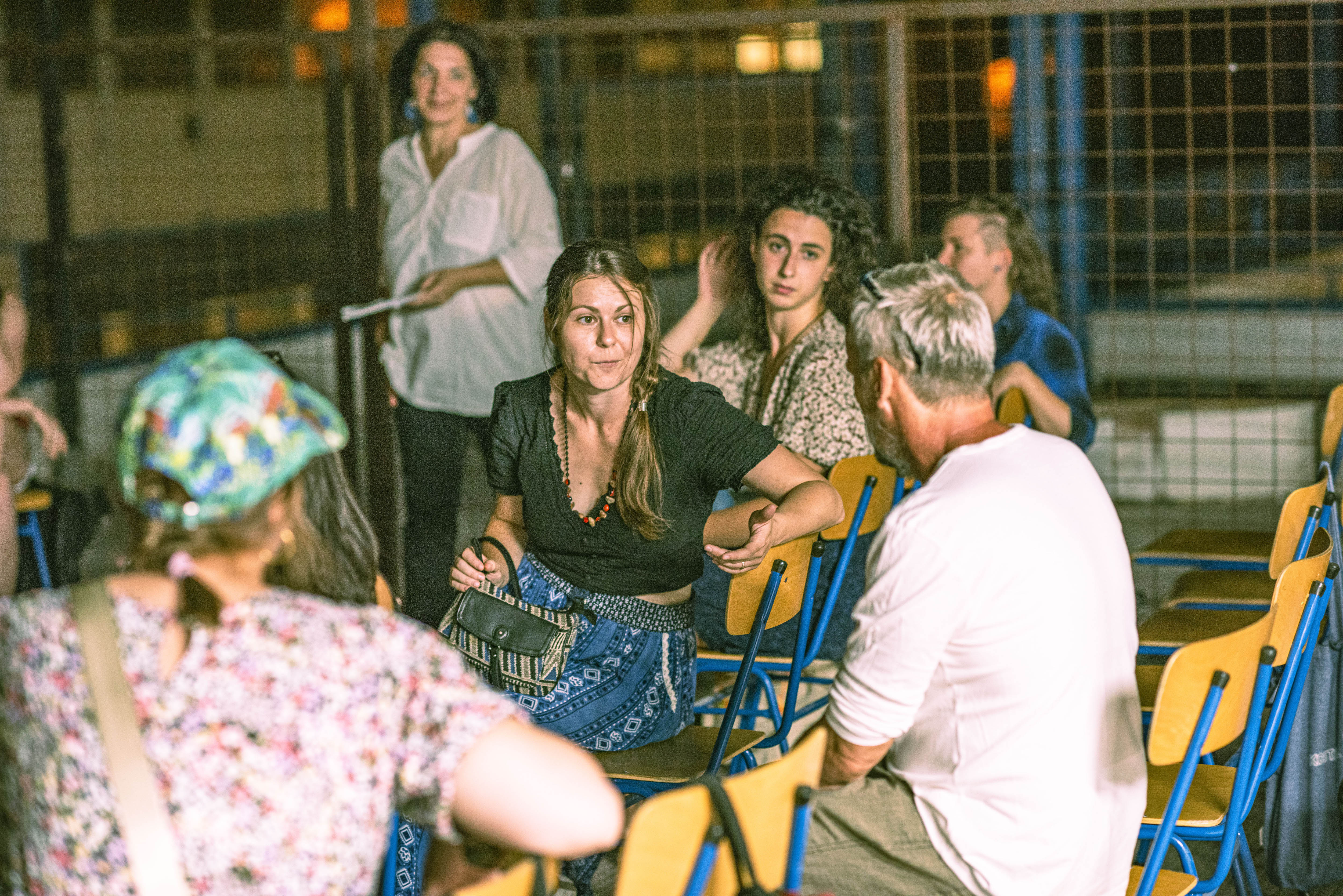 |
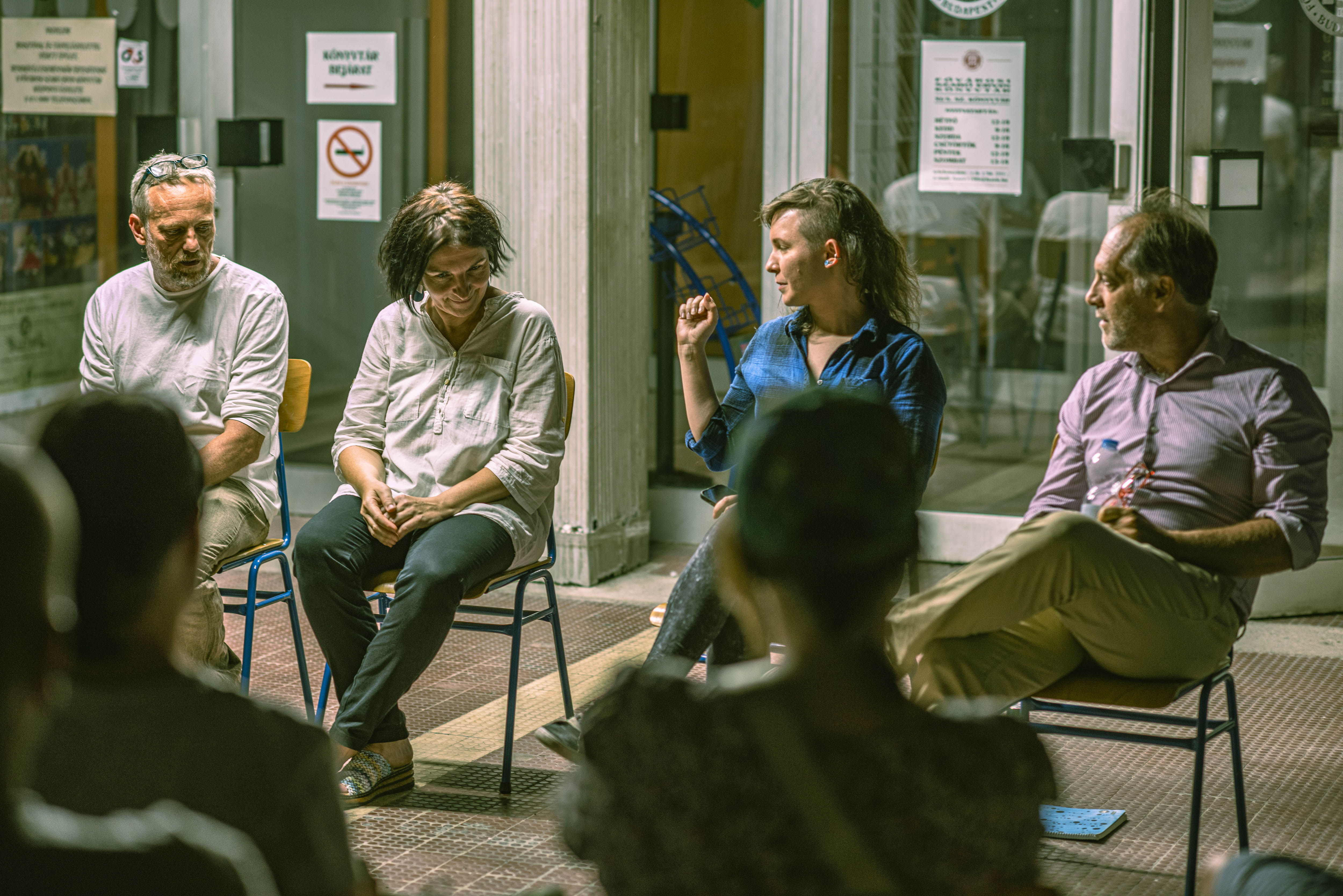 Anita Patonay and Viktor Bori: Water Level. 2024, Sensing the City / PLACCC Festival. Photo: Attila Balogh | |
On the opposite side of the city, near the Stadionok metro station, passengers were confronted with a thought-provoking structure. Plexiglas sheets mounted on a square iron frame, showing the outline of a new mall to be built there soon. Observed from the inside, it can be superimposed on the present. For the moment, it is only a translucent vision of the future, but one that is already sharply redrawing the urban landscape. Boglárka Jakabfi-Kovács's installation "What You See: a Public Affair" drew attention to the so-called robbery and misappropriation of public spaces, not only as passive information, but also as an active call to dare to have a say in the development of the spaces around us, because "what we see is a public affair". A city will only be liveable for its inhabitants if they take part in shaping it, if they have their say, if it is planned to meet the needs of the people who live there, even against economic and political interests. Otherwise, even the best-implemented plan remains sterile and unliveable. The installation was complemented by a talk on Nehru-Beach, where the artist discussed the above themes and the related role of the citizens with writer and philosopher András Lányi, moderated by architect Péter Hámori.
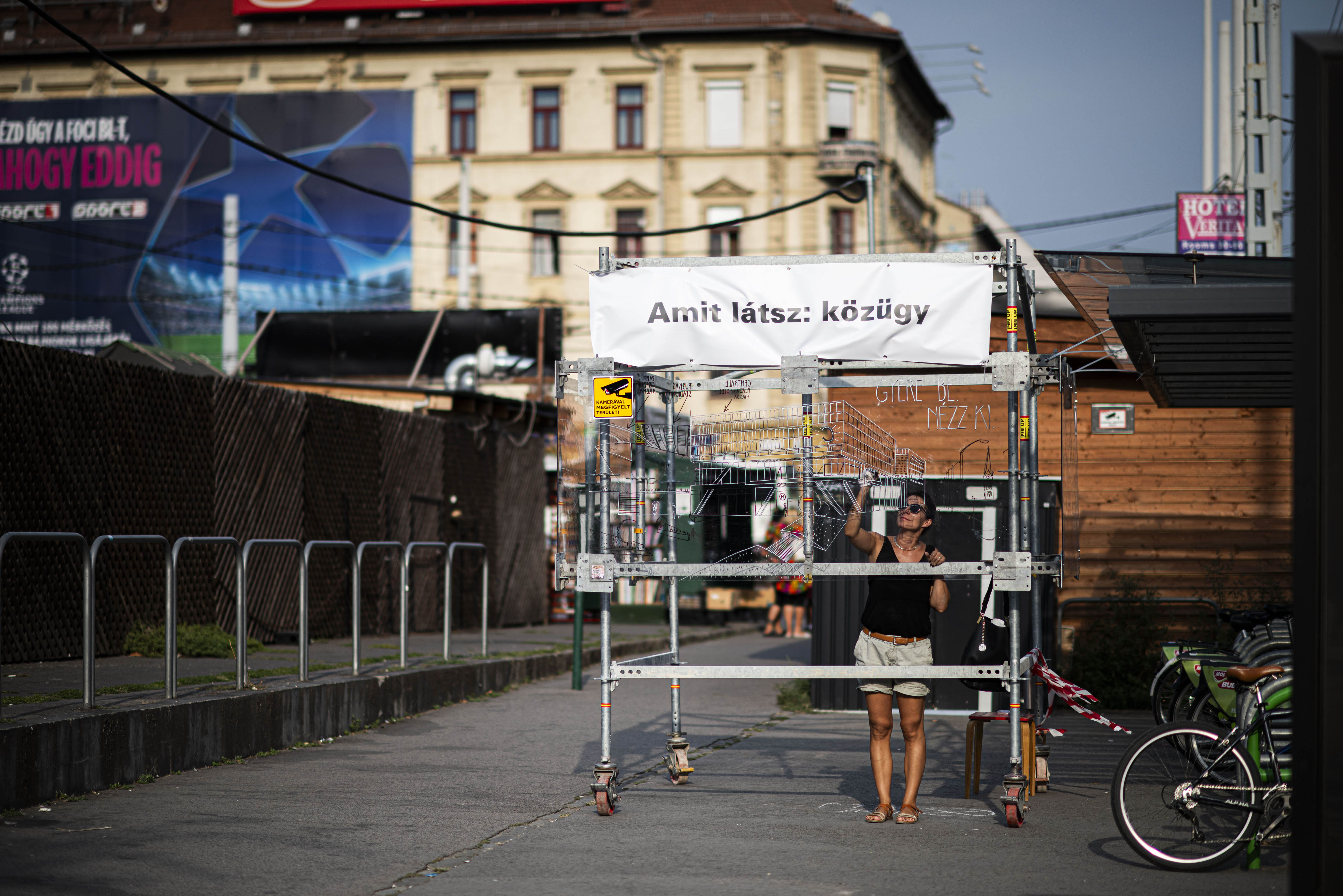 | |
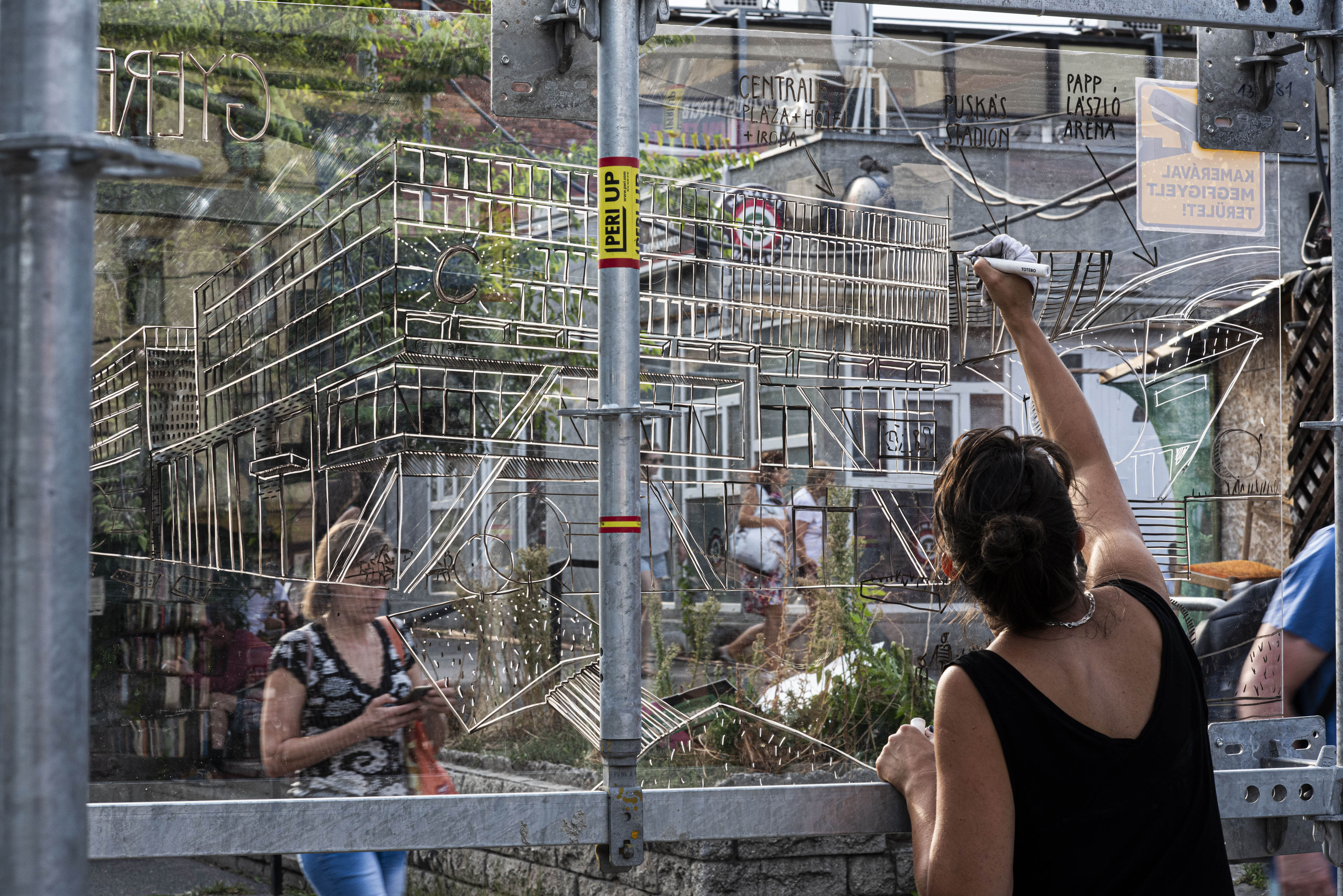 | 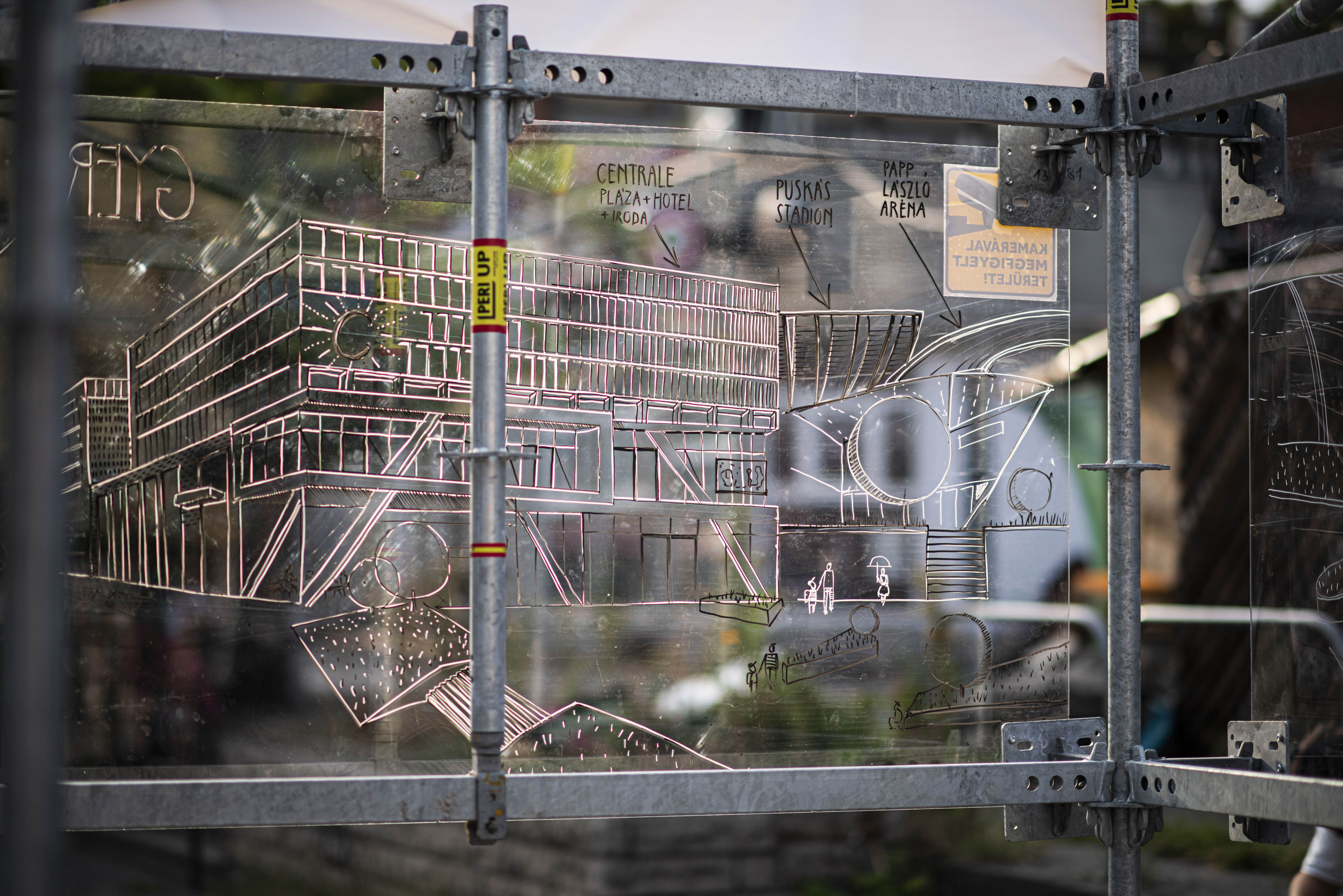 |
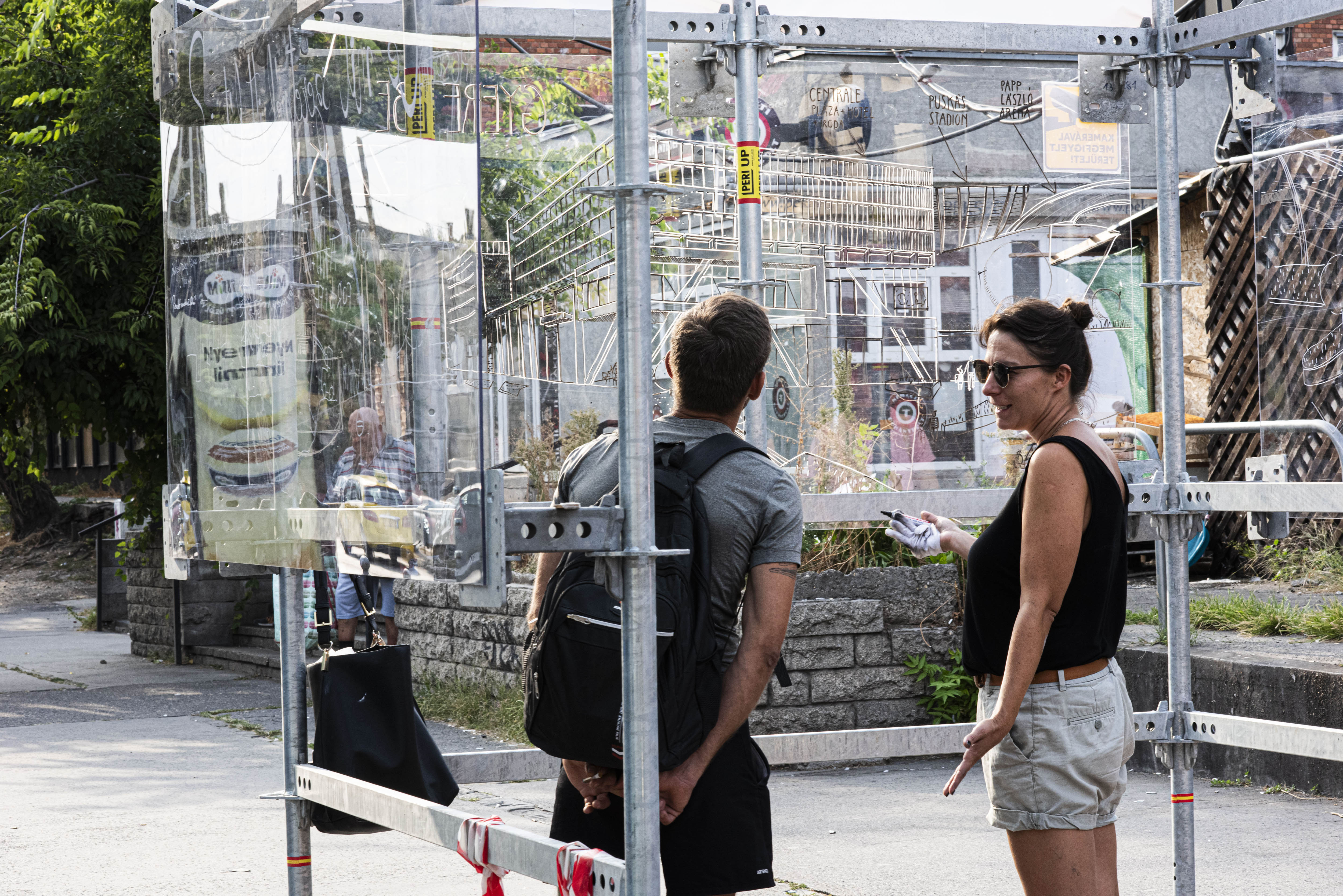 | |
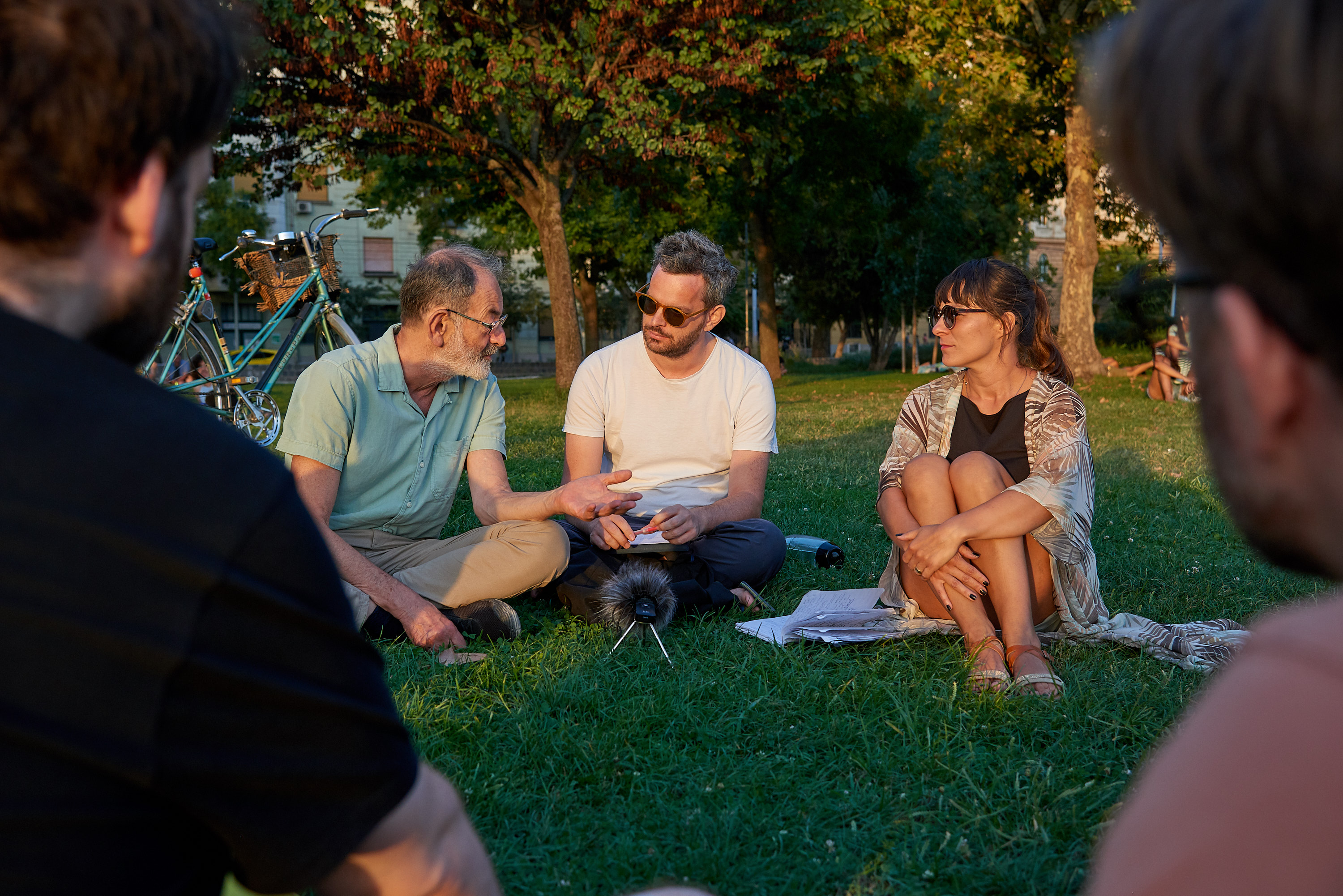 Boglárka Jakabfi-Kovács: What You See: a Public Affair. 2024, Sensing the City / PLACCC Festival. Photo: Attila Balogh | |
Also reflecting on the built environment, Viola Mangel's light installation "Presence in-between" wanted to bring passers-by in the Nyugati Square underpass into a more intimate relationship with non-places. Non-places are spaces that we often just pass through, impersonal, lacking a comforting atmosphere, often with no other role than to conduct transit, perhaps as places of administrative functions. They are usually perceived as being far from welcoming, pleasant and therefore unconnected. Viola, breaking with the frequent and generally negative perception, did not want to change these places, did not want to deprive them of their specificity by means of a function or monumental work, and tried to make them acceptable in their liminal character. To do this, she brought in the Zen movement from a personal point of view, and she chose to use pulsation and meditative breathing, which was combined with a not overcomplicated but very effective play of light. Passers-by could experience this in front of a shop window, if they stopped to observe, slow down and tune in to a different heartbeat of the underpass.
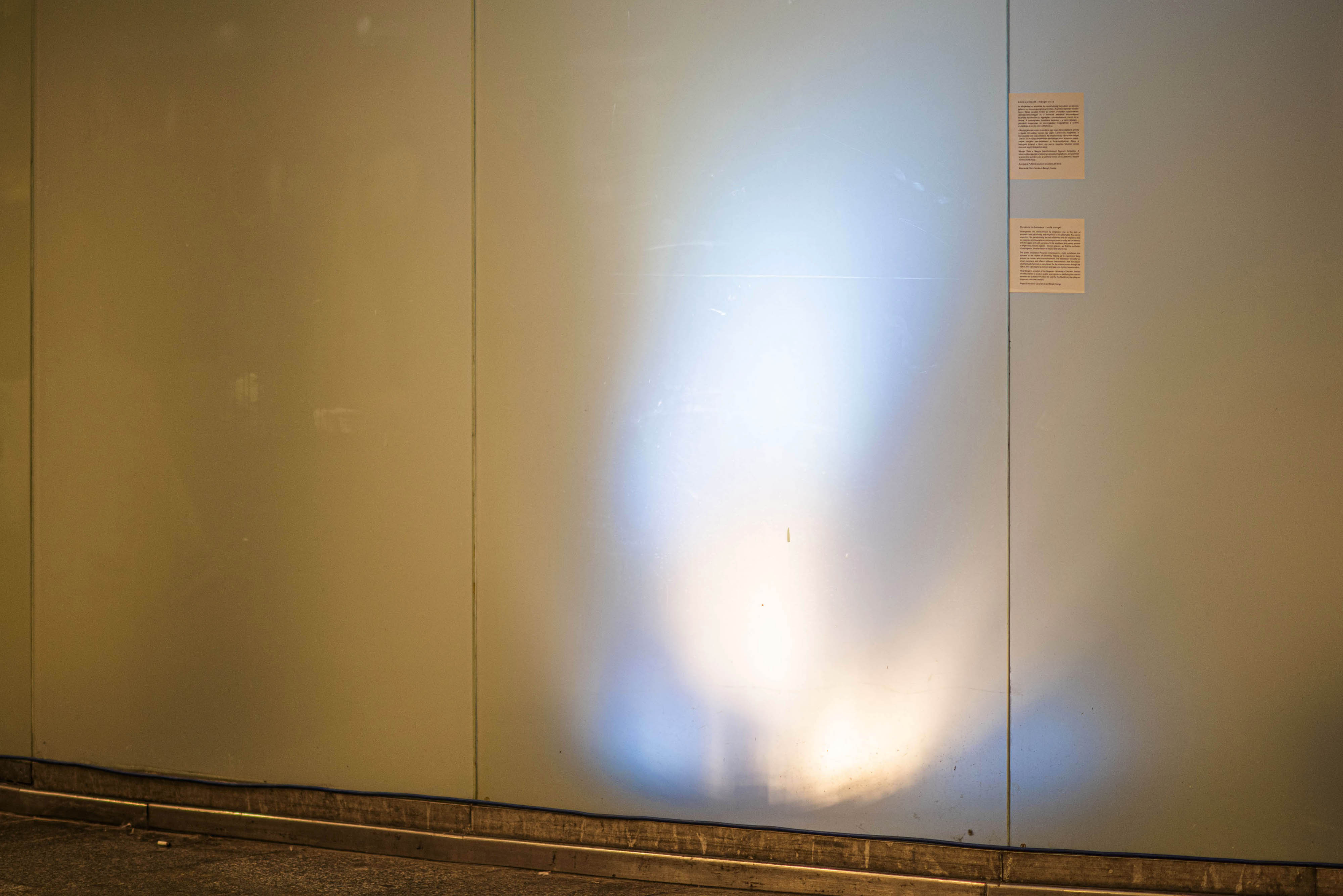 |
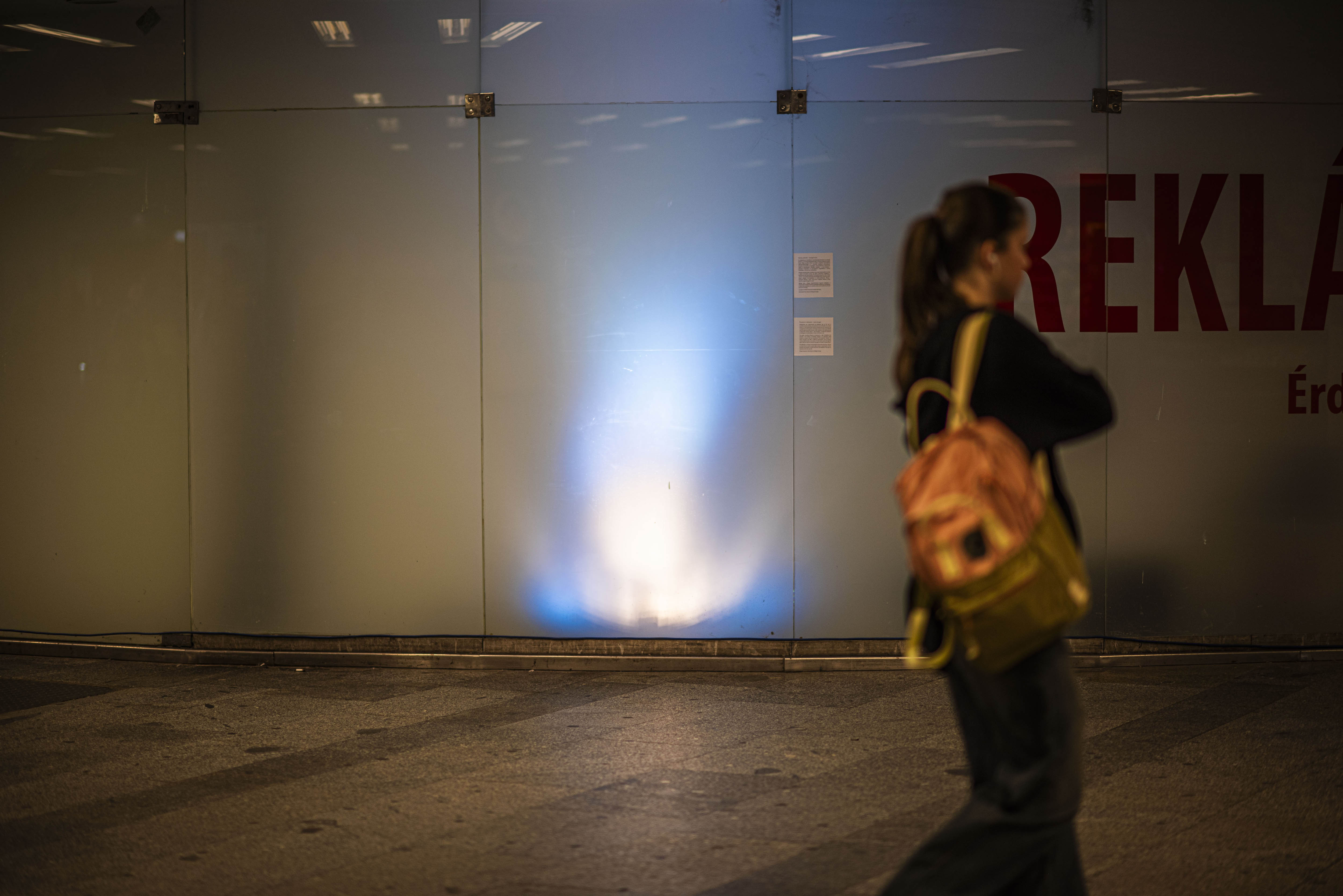 Viola Mangel: Presence in-between. 2024, Sensing the City / PLACCC Festival. Photo: Attila Balogh |
Éva Freund's installation and workshop "Layers of Water" explores the intersection and meeting points of the built environment and nature, and more specifically, water. The project, which took place on the car-free Jane Haining quay of Pest, focused on water filtration, equating our emotional lives and attitudes to the process of water purification, contrasting and combining digital and analogue stimuli. Through a huge, ever-narrowing glass vessel, we could watch the water of the Danube slowly trickling through layers of different materials, textures and sizes, until it finally arrived, drop by drop, through a small tap, into the glass below, where we were left with a liquid of drinkable quality. You could taste the final result, but the workshop also allowed anyone to make their own water filtration system, albeit on a more modest scale. The slow, calm dripping of water was complemented by a dynamic animation projected onto the glass and the wall, including fMRI and EEG images. The blending of urban noise with the sounds played on site added to the complexity of the experience. The workshop was followed by a discussion on the quayside, at the VALYO stand, between the artist and Dr. Dóra Gere, chemist, water hygiene expert, staff member of the National Centre for Public Health and Pharmacy, and Ármin Tillmann, philosopher, student of the Doctoral School of Philosophy at ELTE, moderated by Cili Lohász, co-founder of VALYO - City and River. In connection with the installation, the city's drinking water system, the quality of water, the cultural history of water and philosophical reflections on the relationship between water and man were discussed, as well as the "rechannelling" possibilities of the quays into urban life, their reintegration into the city’s fabric on a human scale. For the health of all.
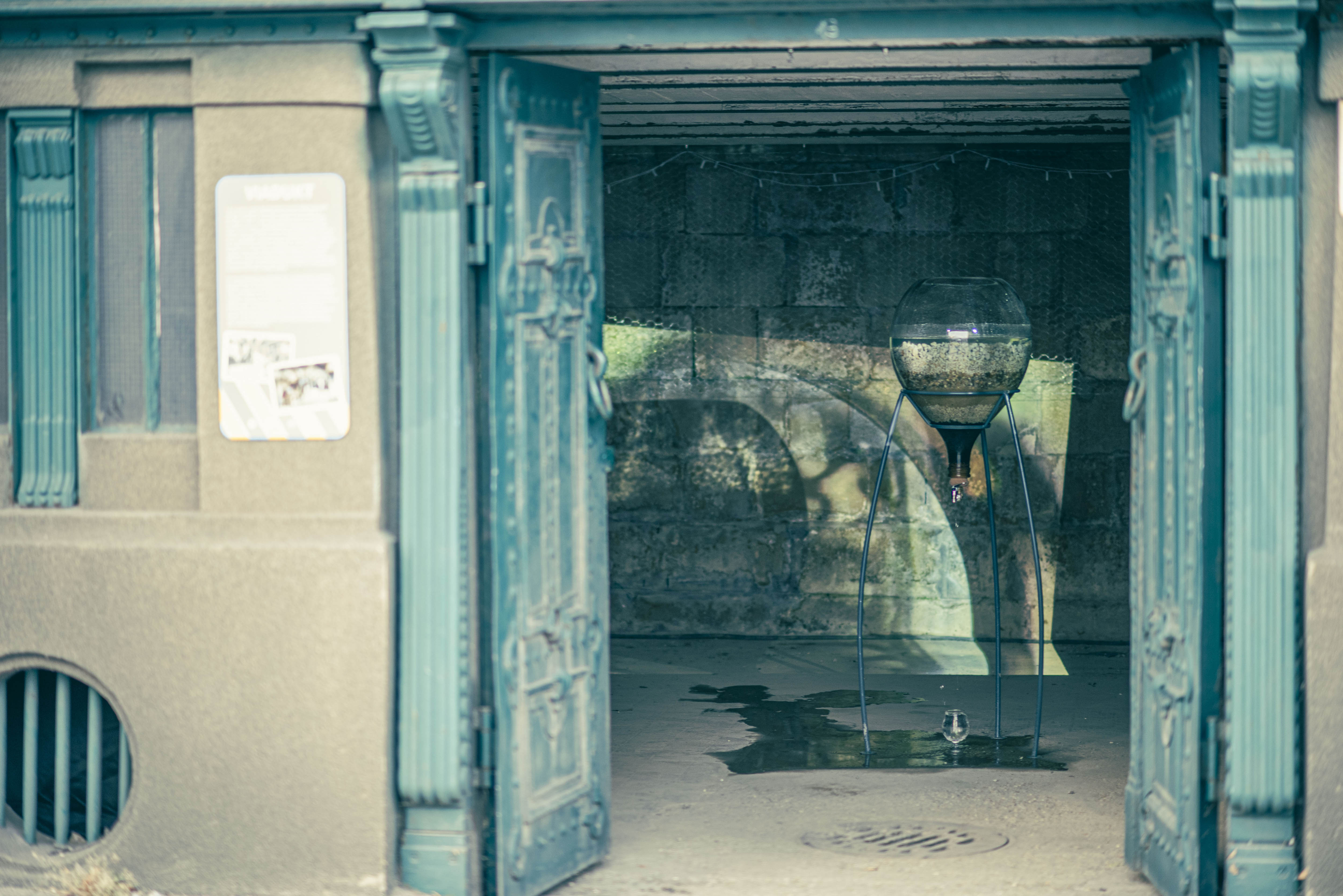 | |
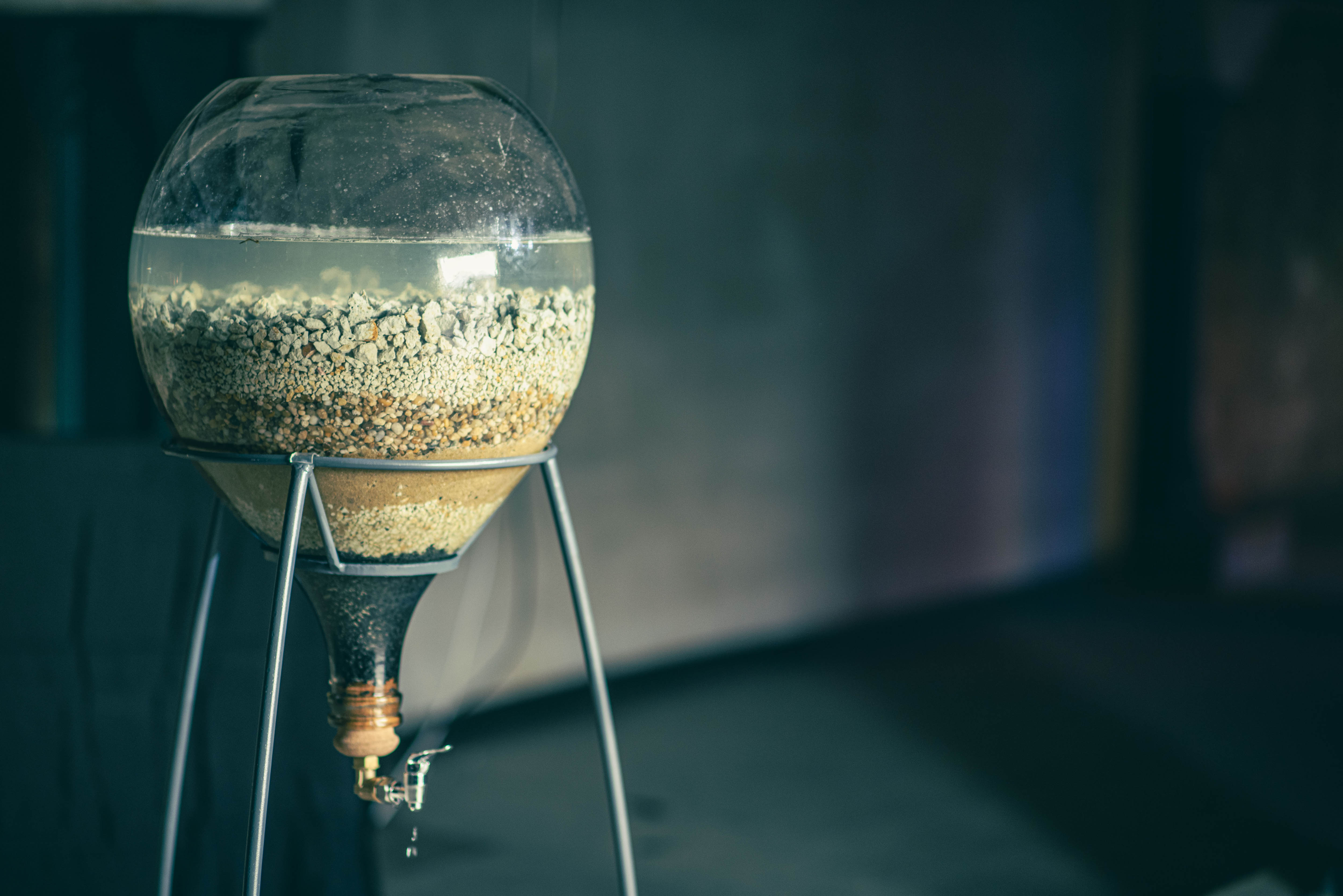 | 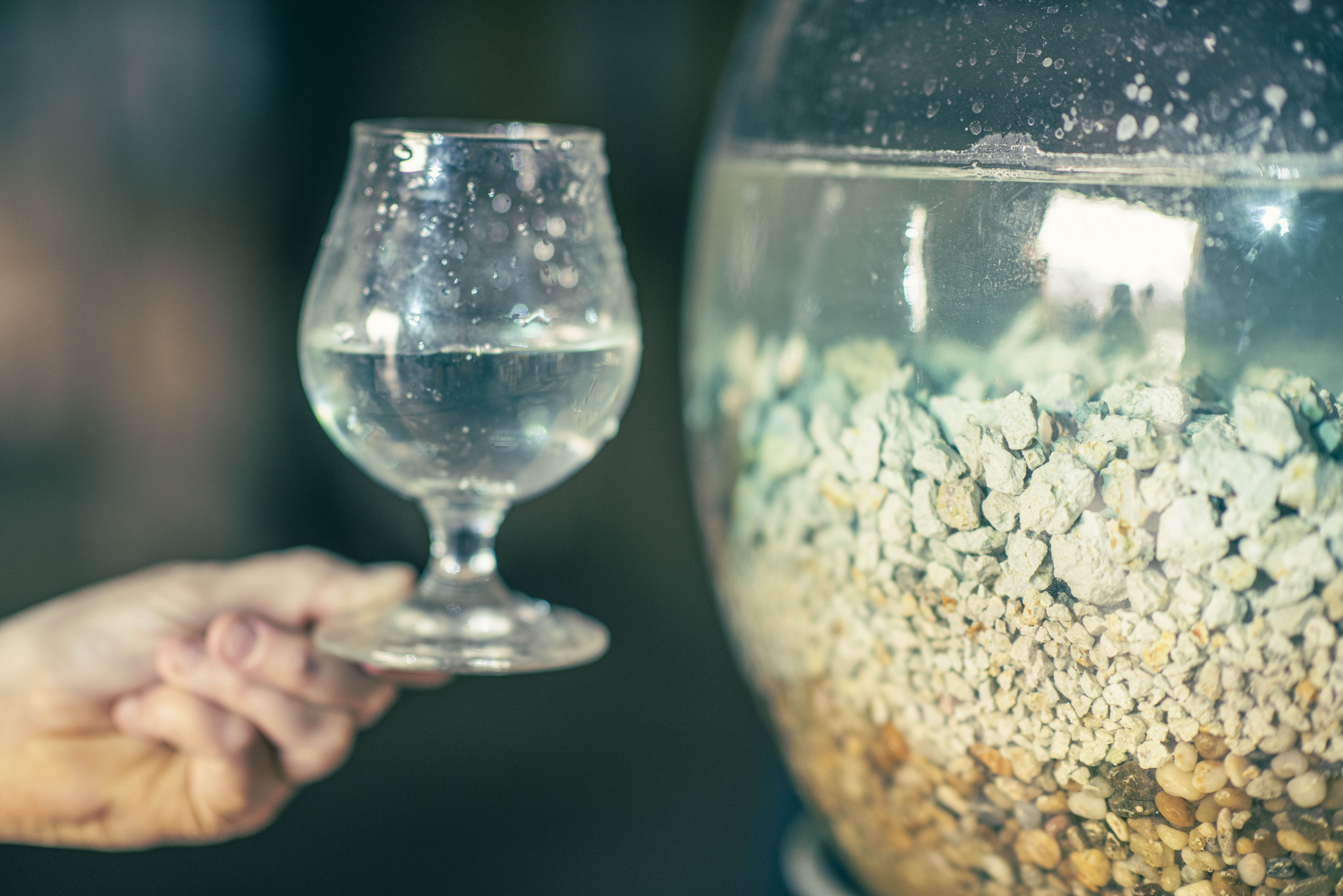 |
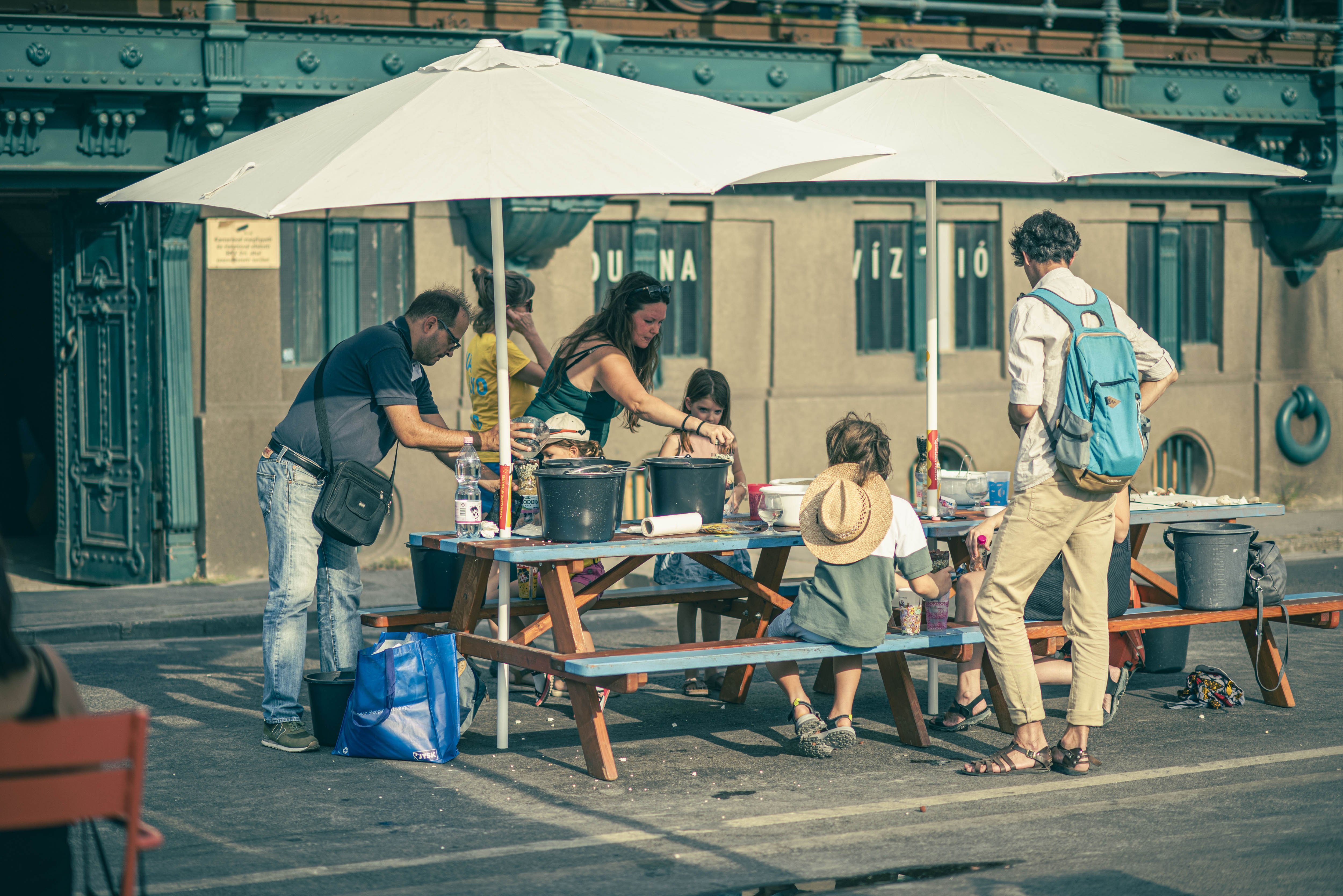 | |
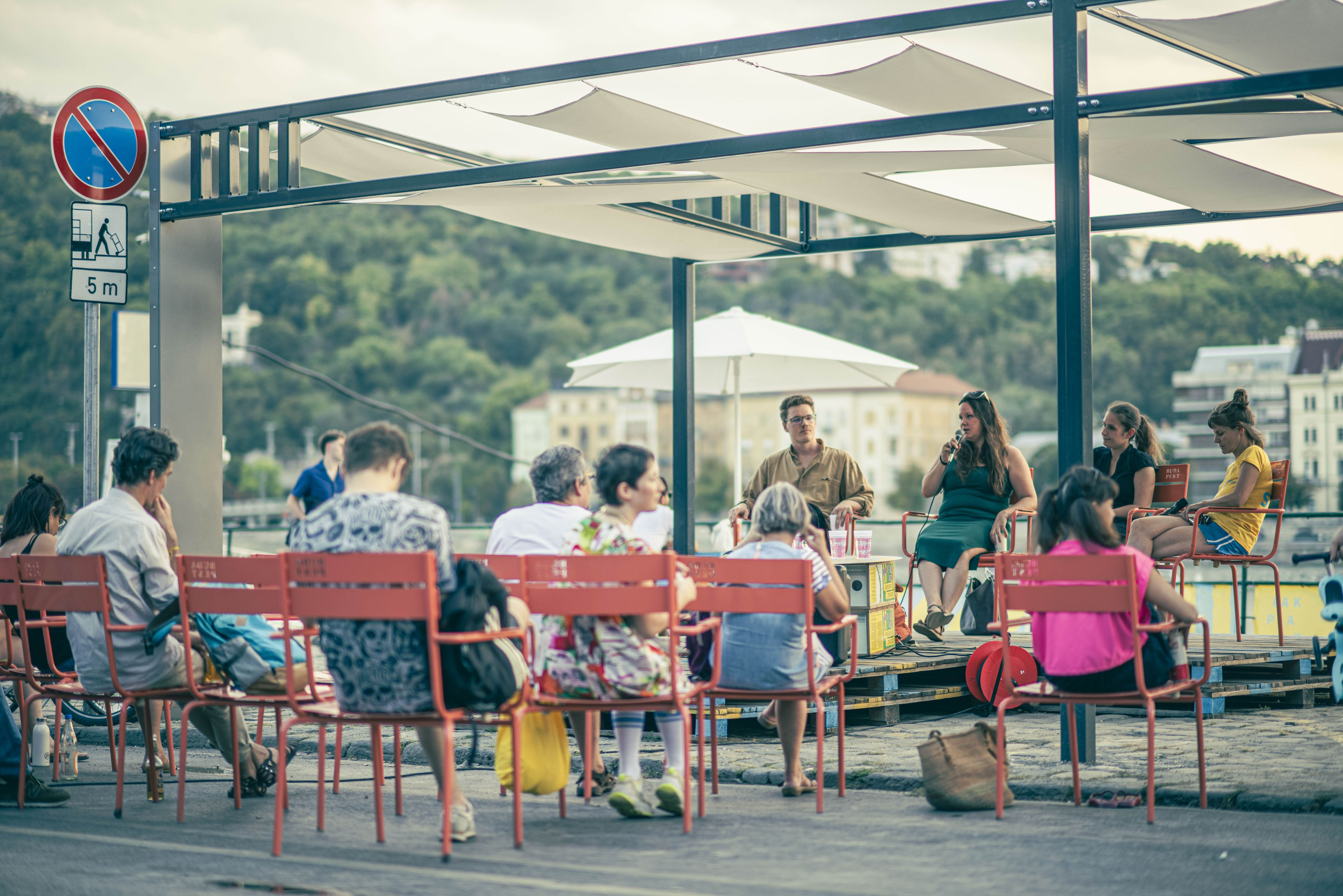 Éva Freund: Layers of Water. 2024, Sensing the City / PLACCC Festival. Photo: Attila Balogh | |
This year's Sensing the City project has come to an end, but the spirit and the ideas it was intended to convey will certainly live on in those who took part - helping them to discover Budapest in a new way. For those who would like to listen to the talks, the good news is that they will soon be available as podcasts (only in Hungarian, though). In the meantime, we encourage everyone to stop for a few moments, step out of the confines of habit and reconnect with their surroundings – through the body, mind and soul. For a more harmonious and intriguing world - inside and outside us.
